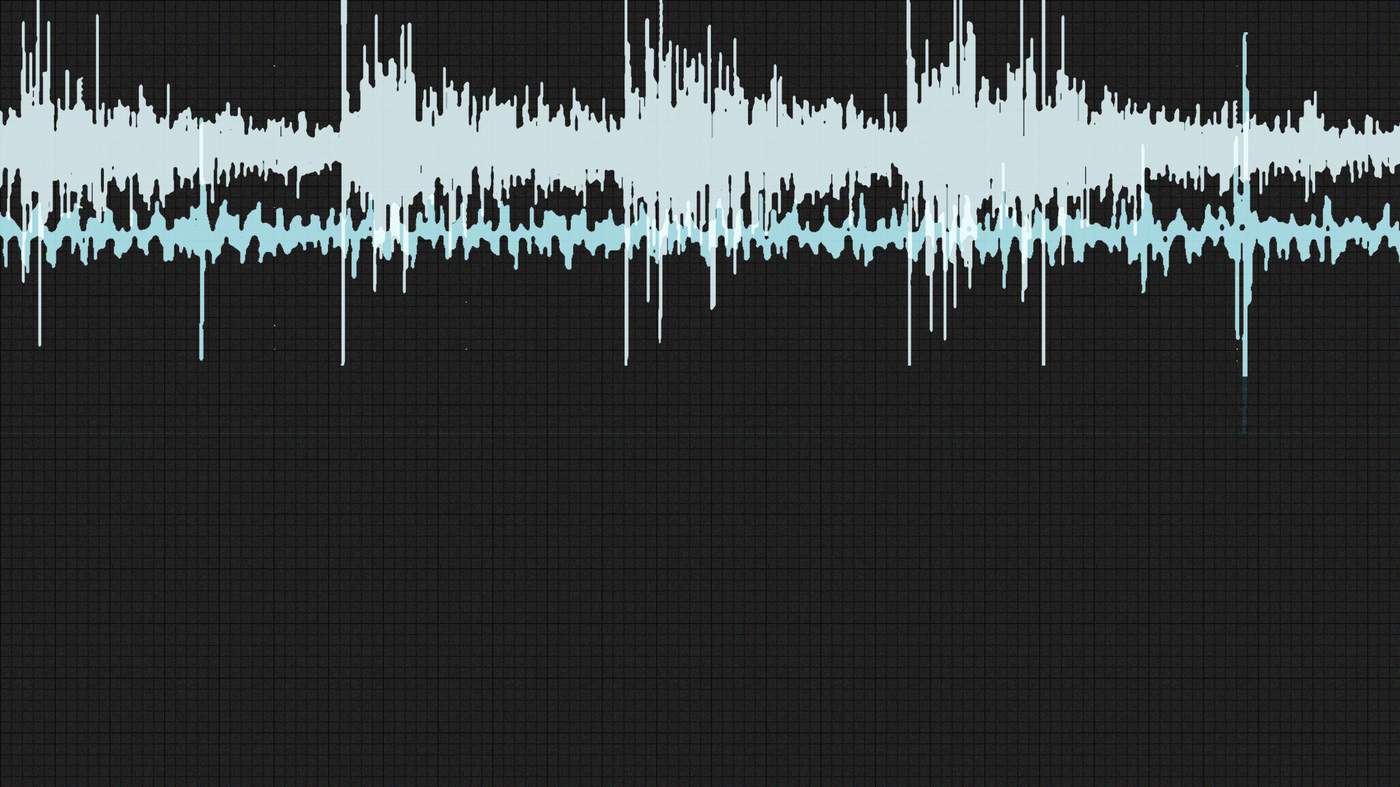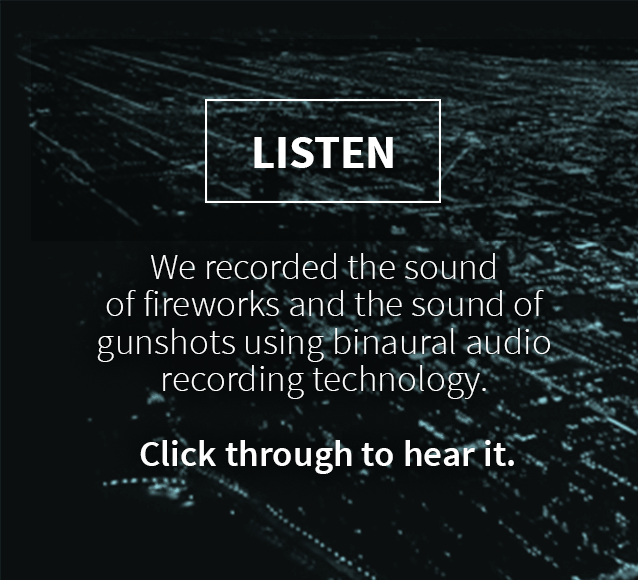Booms, pops and bangs. Those are the sounds that fill the air over Independence Day weekend. But in Chicago, a city plagued by gun violence, many residents are unsure if those sounds are illegal fireworks or gunshots.
For the Chicago Police Department, it is important to distinguish between these sounds so that officers know when they are responding to potential shootings. Department officials said they’ve become more efficient at separating the sounds of fireworks and gunshots, thanks in part to an acoustic surveillance technology called ShotSpotter that helps to identify and locate the sound of gunfire.
Chief Jonathan Lewin, who oversees technology for CPD, said the department is planning to expand the program in police districts with the most gun violence.
Here is a look at how the technology works, how police use it and whether it is effective.
How does ShotSpotter work?
ShotSpotter sensors detect and locate what the company calls “acoustic impulses” — or what CEO Ralph Clark described as “booms, pops and bangs.”
He said 15 to 20 toaster-sized sensors are installed per square mile, typically mounted on light poles, rooftops or the sides of buildings. When the sensors pick up an “acoustic impulse,” that sound is recorded at slightly different times based on how far the sensor is from the source. The time differentials are then used to triangulate the location of the sound to within 65 feet.
The noise, and a visual representation of the sound wave, are then sent to a ShotSpotter facility in California, where staff determine if it was gunfire, Clark said. If it was, an alert that notes the time and location is sent to the police department.
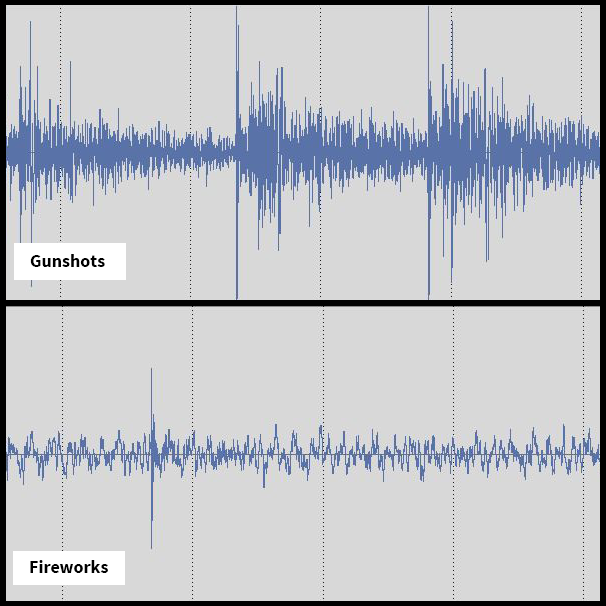
Represented visually, the difference between a gunshot and a firework is generally clear. These waveforms were generated with sound files provided by ShotSpotter.
Clark said the process, from when the trigger is pulled to when police are notified, takes between 30 and 45 seconds.
How does CPD use the technology?
ShotSpotter sensors were initially installed in the Englewood and Harrison police districts, a total of 13.5 square miles. ShotSpotters were expanded to the Deering and Austin districts in February, and more are planned for the Gresham and Ogden districts by the end of this summer.
“Just like violence is concentrated in a small group of people, it’s also concentrated in a relatively small geography in the city,” Lewin said.
Since January, the department has opened several facilities where the information from ShotSpotter, surveillance cameras and other technologies are integrated into a single platform that the department uses to analyze and respond to crimes, Lewin said.
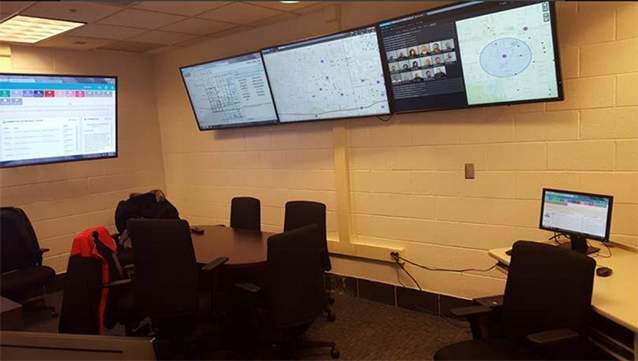
Inside one of the Chicago Police Department's "strategic nerve centers," where ShotSpotter technology is combined with other data to help officers respond to crimes. (Courtesy of CPD)
Officers assigned to districts with ShotSpotter systems are able to receive information about the gunfire on department-issued smartphones, he said.
“Some of the successes we’ve had already with ShotSpotter have been because of just that,” Lewin said. “The officer has actually seen the exact location of the gunshot event, and has been able to either respond themselves or direct other resources on the radio to the exact location."
Lewin said ShotSpotter has also helped commanders see a more complete picture of what is happening in their districts.
“I think the thing that it’s really doing is helping to inform deployment models,” he said.
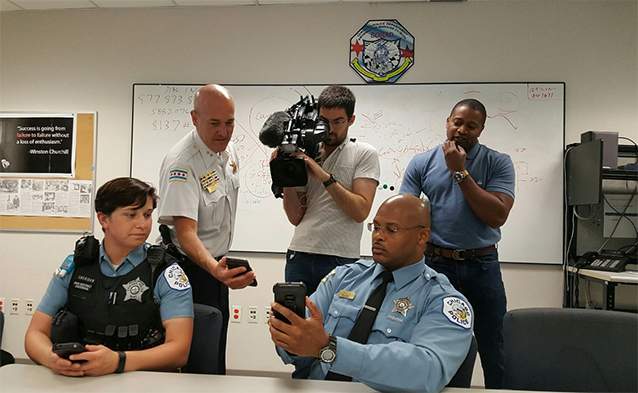
Chicago police officers show off smartphones that can receive information from ShotSpotter. (Courtesy of CPD)
Does it work?
There is little disagreement that ShotSpotter’s technology has, over 20 years of refinement, gotten good at detecting and locating gunfire. What’s less clear is the effect it has on crime.
“We don’t have any rigorous evidence that ShotSpotter is improving public safety,” said Jennifer Doleac, assistant professor of public policy and economics at the University of Virginia.
But Doleac, who used ShotSpotter data to study the impact of juvenile curfew laws in Washington, D.C., said she believes the technology has the potential to be extremely useful. She said it can help police respond faster to gunfire, and perhaps help officers build trust by appearing at the scene of gunfire even when members of the public did not call 911.
However, because ShotSpotter has barred its client cities from releasing detailed data that its sensors collect, those effects have been impossible to measure, Doleac said.
Despite the lack of data and independent analysis, nearly 90 cities in the U.S. have deployed ShotSpotter sensors. Doleac said that in some places the question of whether to use ShotSpotter comes down to whether the money — up to $90,000 per square mile each year to lease sensors — would be better used for other technology, such as police body cameras. Charlotte, North Carolina, terminated its contract with ShotSpotter last year, reportedly claiming that the technology was not worth the money because it did not help Charlotte police solve gun crimes.
But Clark, the ShotSpotter CEO, said he believes numbers shouldn’t be the only measure of the technology’s effect.
“Reducing crime is certainly a very important goal, and one that we subscribe to,” he said. “But there’s even one that goes before that, and that is fulfilling your obligation to serve and protect.”
Lewin said he would like to see a rigorous national study of ShotSpotter’s effect on crime rates. In the meantime, he said the Chicago Police Department is seeing faster response times, and he has heard anecdotal information that this has resulted in the apprehension of some offenders.
“In my opinion, that definitely would not have happened without ShotSpotter.”
Odette Yousef is a reporter at WBEZ. Follow her at @oyousef.
An earlier version of this story misidentified the title of police Chief Jonathan Lewin. He is chief of the police department's Bureau of Technical Services and not a deputy chief.
This story is part of WBEZ's Every Other Hour project. Find more stories here.
Criminal justice reporting and investigative journalism at WBEZ is supported in part by Doris and Howard Conant, The Joyce Foundation and the Robert R. McCormick Foundation.

